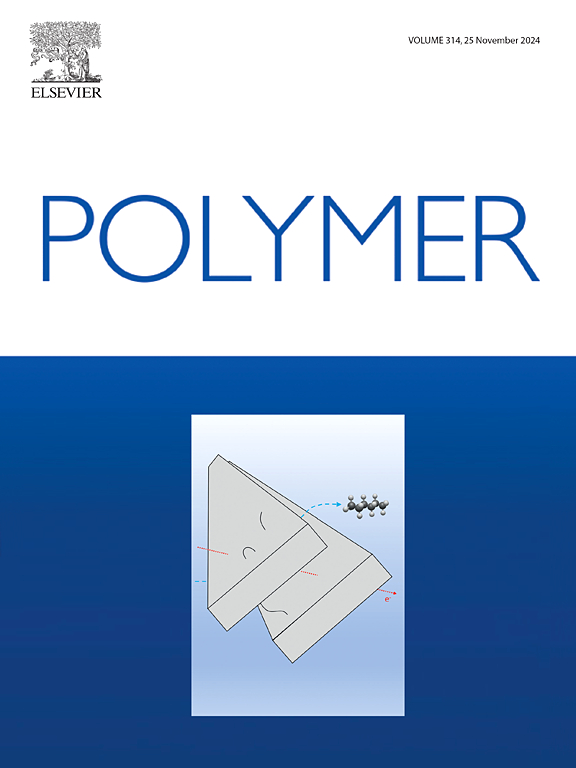Unraveling the semi-interpenetration with conducting polymer of electroresponsive click-hydrogels made of hyaluronic acid via molecular dynamics simulations
IF 4.1
2区 化学
Q2 POLYMER SCIENCE
引用次数: 0
Abstract
Electroresponsive hydrogels have been prepared by semi-interpenetrating a hyaluronic acid-based click-hydrogel (clickHA) with different concentrations of poly(hydroxymethyl-3,4-ethylenedioxythiophene) (PEDOT-MeOH). The morphology of the resulting hydrogels, which showed excellent electrochemical response, consisted in a homogeneous distribution of PEDOT-MeOH nanoparticles decorating the pore well of the honeycomb-like clickHA hydrogel. In order to investigate this particular organization, atomistic molecular dynamics simulations have been conducted on clickHA hydrogels with and without hydroxymethyl-3,4-ethylenedioxythiophene (EDOT-MeOH) monomers. Results have shown that, while EDOT-MeOH molecules do not affect the physical and structural characteristics of clickHA, infiltrated monomers rapidly tend to aggregate inside the hydrogel, forming small clusters stabilized by π-π stacking interactions. These clusters probably act as polymerization nuclei for the formation of PEDOT-MeOH nanoparticles, which explains not only the morphology observed but also the remarkable electrochemical response of clickHA/PEDOT-MeOH hydrogels.


求助全文
约1分钟内获得全文
求助全文
来源期刊

Polymer
化学-高分子科学
CiteScore
7.90
自引率
8.70%
发文量
959
审稿时长
32 days
期刊介绍:
Polymer is an interdisciplinary journal dedicated to publishing innovative and significant advances in Polymer Physics, Chemistry and Technology. We welcome submissions on polymer hybrids, nanocomposites, characterisation and self-assembly. Polymer also publishes work on the technological application of polymers in energy and optoelectronics.
The main scope is covered but not limited to the following core areas:
Polymer Materials
Nanocomposites and hybrid nanomaterials
Polymer blends, films, fibres, networks and porous materials
Physical Characterization
Characterisation, modelling and simulation* of molecular and materials properties in bulk, solution, and thin films
Polymer Engineering
Advanced multiscale processing methods
Polymer Synthesis, Modification and Self-assembly
Including designer polymer architectures, mechanisms and kinetics, and supramolecular polymerization
Technological Applications
Polymers for energy generation and storage
Polymer membranes for separation technology
Polymers for opto- and microelectronics.
 求助内容:
求助内容: 应助结果提醒方式:
应助结果提醒方式:


